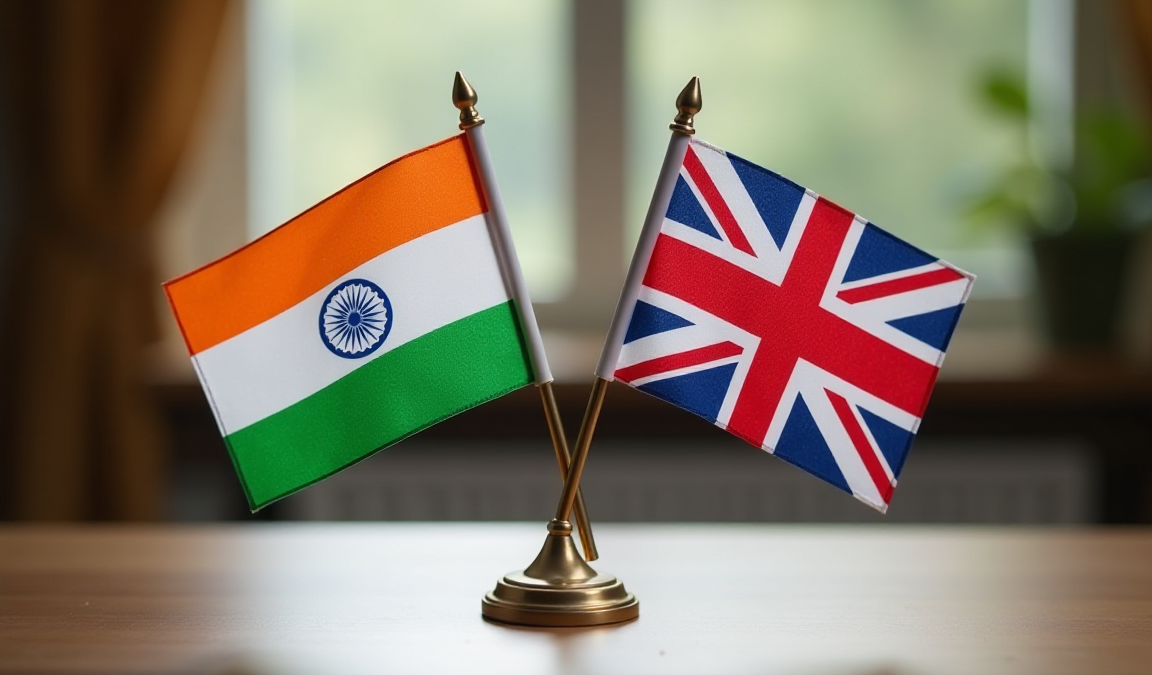India and the United Kingdom signed a major free trade agreement in London on Thursday, with Prime Ministers Narendra Modi and Keir Starmer in attendance.
The deal, which has been in the works for several years, is being described as the most significant trade agreement for the UK since Brexit.
Some early projections say the deal could lift trade between India and the UK by around $34 billion a year, though the real impact will depend on how things play out on the ground.
It’s not just about tariffs; the agreement also touches areas like digital trade, investment flows, and services, which means it could affect a lot more than just exports and imports.
For the UK, it’s as much about optics as economics, showing it can still strike meaningful trade deals outside the EU.
India, on the other hand, seems focused on expanding its global footprint and signaling that it’s open for business.
India-UK FTA: Key features
As part of the new trade deal, close to 99% of Indian exports will now enter the UK market without any tariffs.
That’s big news for sectors like textiles, leather, footwear, gems and jewelry, auto components, marine products, and engineering goods, all areas where India has long sought better access.
On the UK side, India has agreed to remove or reduce tariffs on about 90% of British goods.
One of the headline items? Scotch whisky. Import duties on it will drop from a steep 150% to 75% right away, and then gradually come down to 40% over the next decade.
British-made cars, which currently face tariffs of over 100%, will also see duties fall to just 10% but only under a specific quota.
These changes aren’t just symbolic. They’re likely to reshape trade flows in both directions, especially in consumer goods, and could open doors for deeper commercial ties in the long run.
Major boost for exporters
The free trade agreement is a big deal for exporters on both sides, but the benefits aren’t exactly the same.
For British companies, it means better access to the Indian market in areas like whisky, cars, medical devices, cosmetics, and machinery.
Tariffs that were once around 15% on average are being cut to just 3%, which could make UK products noticeably cheaper for Indian buyers and more competitive.
India’s side of the bargain focuses on access too, but it’s especially helpful for sectors that rely on exports and employ a lot of people, such as textiles, leather, engineering goods, and the like.
These industries already do well abroad, but lower barriers in the UK could give them a sharper edge.
Whether that translates into big gains immediately or takes time will depend on how businesses respond, but the door is clearly wider open now.
Backing the trade deal is a fresh wave of investment, close to £6 billion in new funding and export pledges, which is expected to create thousands of jobs in both India and the UK.
On the Indian side, textile exports to the UK could rise by as much as 45%, according to early projections.
The gems and jewelry sector is also looking at a potential windfall, with exports possibly hitting the $1 billion mark.
It’s an early signal that the agreement isn’t just about policy on paper, it could translate into real economic gains and job growth on both sides.
The post India-UK sign historic free trade deal: here’s all you need to know appeared first on Invezz


